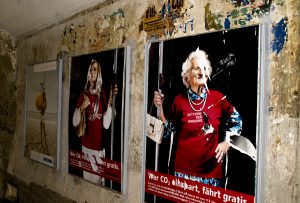 Leanna Robinson checks out the alt side of Germany
Leanna Robinson checks out the alt side of Germany
Post-internet art, technicolor hair, LGBTQ scenes, 24-hour clubs, underground performance art, postmodern paintings, tiny art galleries, avant-garde parties, electro music…travelers can find this and more when they stray from the beaten path in Germany. What better way to learn German than by being forced to yell over thumping music in the wee hours of the night to ask where the music is going to be the next night? What could be more fun than to chat with a German artist about the influence of their work?
There’s no denying that Germany has become an epicenter of cool, and at the very center of that is Berlin. From artistic Americans to European expats to and the cool kids of Germany, Berlin is one of the most sought-after cities for those looking for something a little different.
If Berlin is the center of cool for Europe, then Kreuzberg is the center for Berlin. Those who live in or travel to this neighborhood may be shaking their head that I am doing the ultimate uncool thing of writing about the place, but the rest of the world deserves to know! Stretching from Bergmannstraße to the river at Oberbaumbrücke, Kreuzberg is home to exciting sights for visitors.
Those who are into nightlife should check out Vögelchen—a cozy hangout bar for artists, actors, and musicians, which is decorated like your favorite nutty aunt’s house. For those looking for live-like-an-alt-local vibes check out Clash—the kind of punk dive bar you would expect to find in Berlin with cheap drinks, live music, and a closing time of 5:30 a.m. Prinzipal Kreuzberg lies in the heart of Kreuzberg on the popular Oranienstraße strip, feels like a secret speakeasy, and features acclaimed burlesque shows. The ultimate Berlin night spot, where you can be sure to find hundreds of alternative, artistic, fashionable people of dreams and nightmares, is Berghain. The nightclub recently won a legal ruling to be considered a ‘high art’ institution. The humongous, sprawling space is like the Holy Grail for young, artsy, party people in Berlin. The club is a mecca for dancing and partying, among other things, and has winding hallways, dark side rooms, and a no-photography no-mirrors rule that lets people party well past tea-time into the next day without worrying if their mascara is running.
Aside from nightlife, another place sure to find kindred spirits and have a good time is at none other than art galleries. While Germany boasts impressive museums such as Alte Pinakothek and Lenbachhaus in Munich, Kunsthalle in Hamburg, and Altes Museum in Berlin, these spaces tend to honor and house works by artists who are mostly male and mostly dead. In comparison to the oft-stuffy museums, galleries tend to host shows by artists who are currently creating work, making them great breeding grounds for discussion, and meeting new people. Some notable galleries are Berlinische Galerie, Pool Gallery, me Collectors Room, Carlier Gebauer, and Henrik Springmannn Gallery in Berlin; Ruttkowski 68 and Galerie Artclub in Cologne; Hamburger Kunsthalle, Heliumcowboy Artspace, and Deichtorhallen in Hamburg; Kunstraum, Lothringer 13, and Weltraum in Munich; Ostrale and Galerie Baer in Dresden; and Arty Farty in Cologne.
There are more attractions than venues, bars, and art galleries that those of the subculture like to frequent. Another destination that is loved by trendsetters (Sh! Don’t tell anyone.) is the RAW Flohmarket in Berlin. Many people say that the flea market at Maurpark is the best place to find unique threads, which means that word is out and tourists are flocking there. This makes RAW one of the best places to find unique clothes that the crowds are missing.
Berlin also hosts an alternative Berlin free walking tour that showcases underground sights of the subculture like artist squats, skate parks, street art, art projects and graffiti culture. If that sounds like a little too much, try out BonAppetour—an app that lets you live like a local by linking travelers to locals who host dinners at their homes.
Culture, like language, is best absorbed not by learning about it in books, (although having previous knowledge and context absolutely helps) but through immersion. If you visit any city in Germany and want to find the best thrift store to find a good gem, or find what shows are going on the upcoming weekend you can certainly try and find out online, but the best way to discover new things is to talk to people. Travelers and tourists are often intimidated to talk to locals because of language and cultural differences. Cast those fears aside, and try your hand at talking to a stranger at a pub, or chatting up the cashier at a café about what kind of things are going on. You’d most likely be surprised by their enthusiasm to show a tourist the underground things that are happening in the city that they live in.
Leanna Robinson is a writer, artist, and creative director for Language Magazine. She graduated from the University of Central Florida with a BA in Creative Writing and currently lives in Los Angeles.
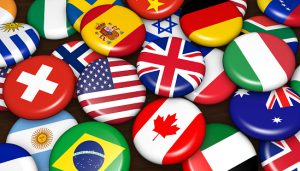 Celebrate International Education Week with NAFSA: Association of International Educators. NAFSA is focusing on the benefits of international education and exchange and says their focuses are, “campus internationalization, peacebuilding, global learning, and the economic impact of international students in your local area.”
Celebrate International Education Week with NAFSA: Association of International Educators. NAFSA is focusing on the benefits of international education and exchange and says their focuses are, “campus internationalization, peacebuilding, global learning, and the economic impact of international students in your local area.”

 CJ Entertainment announced on Monday that the South Korean film Miss Granny will receive remakes in English and Spanish. Tyler Perry Studios’ 34th Street Films will co-produce the U.S. version. The movie has already been remade into six Asian languages. The South Korean comedy-drama is about a woman in her 70’s who mysteriously finds herself in the body of her 20-year-old self.
CJ Entertainment announced on Monday that the South Korean film Miss Granny will receive remakes in English and Spanish. Tyler Perry Studios’ 34th Street Films will co-produce the U.S. version. The movie has already been remade into six Asian languages. The South Korean comedy-drama is about a woman in her 70’s who mysteriously finds herself in the body of her 20-year-old self. With the passage of Proposition 58, California, parents and teachers will soon be able to decide the on the blend of languages in which to best educate children. “As president of Californians Together and a school board member, I am thrilled that the electorate sees being bilingual as an asset, and we will work with policy makers and school districts to make this a reality for California’s students,” said Xilonin Cruz Gonzalez.
With the passage of Proposition 58, California, parents and teachers will soon be able to decide the on the blend of languages in which to best educate children. “As president of Californians Together and a school board member, I am thrilled that the electorate sees being bilingual as an asset, and we will work with policy makers and school districts to make this a reality for California’s students,” said Xilonin Cruz Gonzalez.
 Who knew that sharing a coffee with a local Tico in Heredia, Costa Rica, would change the life of 26-year-old American and low-intermediate Spanish-speaker Chris?
Who knew that sharing a coffee with a local Tico in Heredia, Costa Rica, would change the life of 26-year-old American and low-intermediate Spanish-speaker Chris?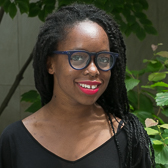 “I loved my time in Germany and will always look back at it with fond memories. I studied abroad at the Goethe Institut Mannheim and Universitaet Stuttgart for my Junior year as a DAAD Undergraduate Scholarship recipient. During my time in Germany, I improved my command of the language through intensive language courses and completing coursework in my major. The staff at the DAAD was tremendously helpful in providing me with information about handling bureaucratic details, applying to other prestigious scholarship programs, and connecting me with other students and fellow scholars in my field of study and area.”
“I loved my time in Germany and will always look back at it with fond memories. I studied abroad at the Goethe Institut Mannheim and Universitaet Stuttgart for my Junior year as a DAAD Undergraduate Scholarship recipient. During my time in Germany, I improved my command of the language through intensive language courses and completing coursework in my major. The staff at the DAAD was tremendously helpful in providing me with information about handling bureaucratic details, applying to other prestigious scholarship programs, and connecting me with other students and fellow scholars in my field of study and area.”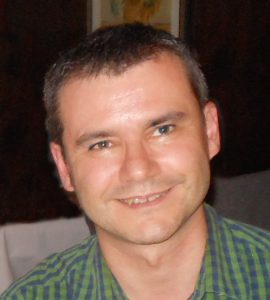 “We had a very enjoyable stay at F+U Academy of Languages in Heidelberg. The transfer to the student residence offered by the school went well according to the information provided about the meeting point. The student residence was very well located in the Old Town and we appreciated that we could easily get to school by foot. I took a B2 German intensive course, while Benoit was in an A1 class. We both liked the German courses we have taken and we were impressed by the quality of the teaching as well as the good organization of the school. It was my partner’s first experience with a German language course and I feel this experience gave him the will to keep on learning this language.” –Guy Bonin & Benoit Yergeau
“We had a very enjoyable stay at F+U Academy of Languages in Heidelberg. The transfer to the student residence offered by the school went well according to the information provided about the meeting point. The student residence was very well located in the Old Town and we appreciated that we could easily get to school by foot. I took a B2 German intensive course, while Benoit was in an A1 class. We both liked the German courses we have taken and we were impressed by the quality of the teaching as well as the good organization of the school. It was my partner’s first experience with a German language course and I feel this experience gave him the will to keep on learning this language.” –Guy Bonin & Benoit Yergeau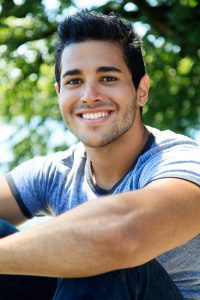 “It takes so little time to feel like home here. There’s some kind of magic about Lindau that got me right away from the very first time I visited. I knew from the start that I wanted to walk its streets and see its people for a lot longer than just a few days. Then I discovered the dialoge Sprachinstitut. It was just like finding vanilla ice cream for your apple strudel. Lindau was already great, but finding dialoge made it even better. From the very first day your amazing teachers and staff will guide you through every single step you need to take. You will never feel lost. Students come from so many different places and with such different stories that you’ll never stop learning, and before you even realize, you will be part of a new family.” –Jesús Nieto Torres.
“It takes so little time to feel like home here. There’s some kind of magic about Lindau that got me right away from the very first time I visited. I knew from the start that I wanted to walk its streets and see its people for a lot longer than just a few days. Then I discovered the dialoge Sprachinstitut. It was just like finding vanilla ice cream for your apple strudel. Lindau was already great, but finding dialoge made it even better. From the very first day your amazing teachers and staff will guide you through every single step you need to take. You will never feel lost. Students come from so many different places and with such different stories that you’ll never stop learning, and before you even realize, you will be part of a new family.” –Jesús Nieto Torres.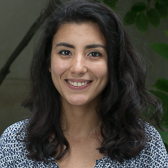 “I’m a Comparative Literature major with a concentration in German language and literature. My year as a short-term student at the University of Heidelberg was thus invaluable to my academic career. Through the DAAD undergraduate scholarship, I was able to learn German in an immersive environment and study original German texts at a prestigious university. My experience abroad was important both to my intellectual and personal growth. It was an ideal situation made possible for me by the generous support of DAAD.” –Atussa Mohtasham
“I’m a Comparative Literature major with a concentration in German language and literature. My year as a short-term student at the University of Heidelberg was thus invaluable to my academic career. Through the DAAD undergraduate scholarship, I was able to learn German in an immersive environment and study original German texts at a prestigious university. My experience abroad was important both to my intellectual and personal growth. It was an ideal situation made possible for me by the generous support of DAAD.” –Atussa Mohtasham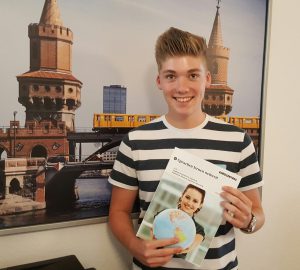 “I had heard good things about Eurocentres Berlin, which is why I’ve decided to go to this school. Moreover, my mother, my father and my sister had been in Berlin with Eurocentres as well. I like the teaching methods at the school in Berlin. You can see that the teachers enjoy what they are doing and the fun is transmitted to students too. The school offers many leisure activities in the afternoon or evening, where we can get to know our classmates and further practice our German. The school is visited by students from many different countries and you cannot not only get to know various cultures but also make friends with people from all over the world.” –Jordan Caillet
“I had heard good things about Eurocentres Berlin, which is why I’ve decided to go to this school. Moreover, my mother, my father and my sister had been in Berlin with Eurocentres as well. I like the teaching methods at the school in Berlin. You can see that the teachers enjoy what they are doing and the fun is transmitted to students too. The school offers many leisure activities in the afternoon or evening, where we can get to know our classmates and further practice our German. The school is visited by students from many different countries and you cannot not only get to know various cultures but also make friends with people from all over the world.” –Jordan Caillet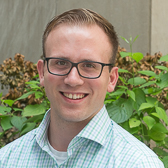 “Studying in Germany has been the most transformative event in my life thus far. While studying in Germany, I was able to vastly improve my German language skills, a personal goal of mine. However, my study abroad experiences extended far beyond the classroom. My initial perspectives and thoughts were challenged in the changing social climate in Europe. I forged many lifelong friendships that will surely last a lifetime. My own future aspirations shifted while I was in Germany. Upon my graduation, I plan to return to Germany to complete my master’s and stay on a permanent basis.” –Matthew Viney
“Studying in Germany has been the most transformative event in my life thus far. While studying in Germany, I was able to vastly improve my German language skills, a personal goal of mine. However, my study abroad experiences extended far beyond the classroom. My initial perspectives and thoughts were challenged in the changing social climate in Europe. I forged many lifelong friendships that will surely last a lifetime. My own future aspirations shifted while I was in Germany. Upon my graduation, I plan to return to Germany to complete my master’s and stay on a permanent basis.” –Matthew Viney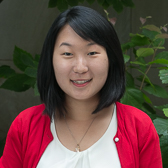 called Weimar that is just about the size of my home university community was the most unique and inspiring experience in my personal and educational career. While overcoming the language barrier was one of the most challenging aspects of this experience, in the end, it has come to be the greatest accomplishment from studying abroad. I learned new approaches to art, different values in teaching, and gained immeasurable life skills for my personal growth. DAAD has helped me to lengthen my stay in Germany where it provided greater access and stability to allow this valuable experience come to fruition.”
called Weimar that is just about the size of my home university community was the most unique and inspiring experience in my personal and educational career. While overcoming the language barrier was one of the most challenging aspects of this experience, in the end, it has come to be the greatest accomplishment from studying abroad. I learned new approaches to art, different values in teaching, and gained immeasurable life skills for my personal growth. DAAD has helped me to lengthen my stay in Germany where it provided greater access and stability to allow this valuable experience come to fruition.” Leanna Robinson checks out the alt side of Germany
Leanna Robinson checks out the alt side of Germany Jennifer Helfand verses on the ‘musts’ of language learning
Jennifer Helfand verses on the ‘musts’ of language learning MacArthur Foundation has announced the 2016 MacArthur Fellows, commonly known as the “genius grants,” and this year’s class includes Native American linguist Daryl Baldwin. Daryl and 22 other Fellows will receive a no-strings-attached $625,000 grant for their exceptional creativity and potential for future contributions to their fields. Daryl Baldwin is a linguist and scholar reviving the linguistic, cultural, and intellectual heritage of the Miami (Myaamia) nation. Forced removal of the Miami nation from their homeland in the Great Lakes region west to the unorganized territory in the nineteenth century scattered the Myaamia people, now numbering around 5,000, across the country and accelerated the decline of the Miami language, which lost its last native speaker in the mid-twentieth century. Through a multipronged approach that is rooted in restoring use of the Miami language, and includes both education and research, Baldwin is imparting important cultural knowledge to present-day Myaamia descendants.
MacArthur Foundation has announced the 2016 MacArthur Fellows, commonly known as the “genius grants,” and this year’s class includes Native American linguist Daryl Baldwin. Daryl and 22 other Fellows will receive a no-strings-attached $625,000 grant for their exceptional creativity and potential for future contributions to their fields. Daryl Baldwin is a linguist and scholar reviving the linguistic, cultural, and intellectual heritage of the Miami (Myaamia) nation. Forced removal of the Miami nation from their homeland in the Great Lakes region west to the unorganized territory in the nineteenth century scattered the Myaamia people, now numbering around 5,000, across the country and accelerated the decline of the Miami language, which lost its last native speaker in the mid-twentieth century. Through a multipronged approach that is rooted in restoring use of the Miami language, and includes both education and research, Baldwin is imparting important cultural knowledge to present-day Myaamia descendants.